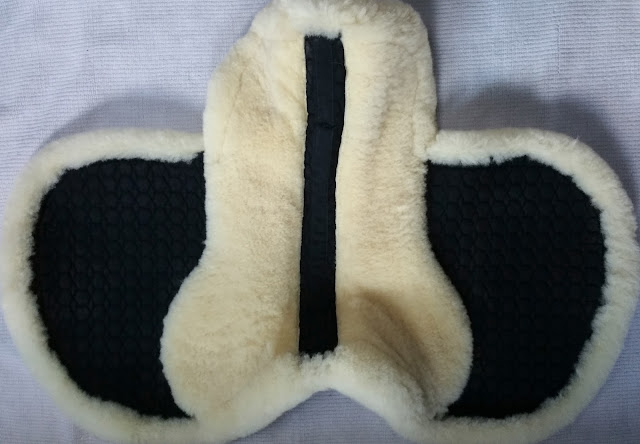Welcome to the first post of Kerry Equestrian's blog!
While the topics posted here may vary over time, they will initially pertain to the care of horse tack, apparel, and accessories. We want to share the things we have learned over the years, and we hope to learn from you as well.
Okay, now back to the topic of washing a saddle pad at home.
So after months/years of pushing our teens to do their own laundry, one day I had the horrifying experience of finding the washing machine full of horse hair! Turns out that my daughter had thrown some saddle pads into our top loading (no agitator) washing machine... Even though the pad was clean after the washing, it was covered with stray horse hairs, and even the floor underneath the drying rack was sprinkled with stray hairs.
I tried to look on the bright side -- at least the horse hair was clean... ? But I was still horrified and grossed out.
Well, the good news is that we have come up with a saddle pad cleaning protocol that greatly decreases the mess and ick-factor of washing these hard working textiles in our home washing machine. Here is an example of how we do it now:
1. Remove hair with vacuum and mini turbine tool. Previously we had tried to use a dustbuster on the saddle pads, but that barely reduced the volume of hair. Mainly, this was due to the hair being stuck into the saddle pad. This is where the mini turbine tool comes in.
The mini turbine tool attaches to our Dyson vacuum. It spins brushes around and vacuums up a lot of hair and dirt
without sucking the pad up too. So you can run the attachment across the pad by hand and pull up a
ton of hair. Mine is an older model, but
this appears to be the current model.
2. Soak in Oxy Clean to remove stains. I am a huge fan of Oxy Clean for stain removal. Just dissolve some Oxy Clean in a tub of water (a large plastic storage tote works well for this) for a few hours.
3. Wash in washing machine using standard laundry practices. Now wash the saddle pad with a small amount of powder (we use half the amount we would use for a full load), more oxy clean, and set it for extra soaking.
If you have a clever auto-sensing machine, be sure to check that it has enough water when it is soaking. If your saddle pad is new or otherwise on the stiff side, you may want to push down or swish your saddle pad around by hand during the soak cycle.
4. Air dry the saddle pad on a drying rack.
5. Clean the washing machine. If you don't have more saddle pads to wash, you can now clean your machine to your tastes. Be sure to check the tub and machine for loose hairs. If you find any, just use a dustbuster to pick them up. Then you can run the Tub Clean cycle on your washing machine if you wish. I personally think this is a good idea...
6. Touch up with vacuum. Once the saddle pad is dry, check to see if any more hair was dislodged by the washing process, and give it another vacuuming with the upholstery attachment.
7. Enjoy your clean saddle pad and clean laundry area!
Here are snapshots of the process for one pad:
 |
| Saddle Pad Before. Not too bad, right? |
 |
| Inside of Saddle Pad. Yuck! |
 |
| Inside of saddle pad after vacuuming. Much less hair, dust, and dirt. |
 |
| Soaking |
 |
| Clean Saddle Pad - Inside. Much better! |
 |
| Clean Saddle Pad - Outside. Nice. |
We hope that you have enjoyed reading about our current Saddle Pad washing best practices. If you have discovered any best practices yourself, please share in a Comment.
Thanks and Happy Horsing!



















